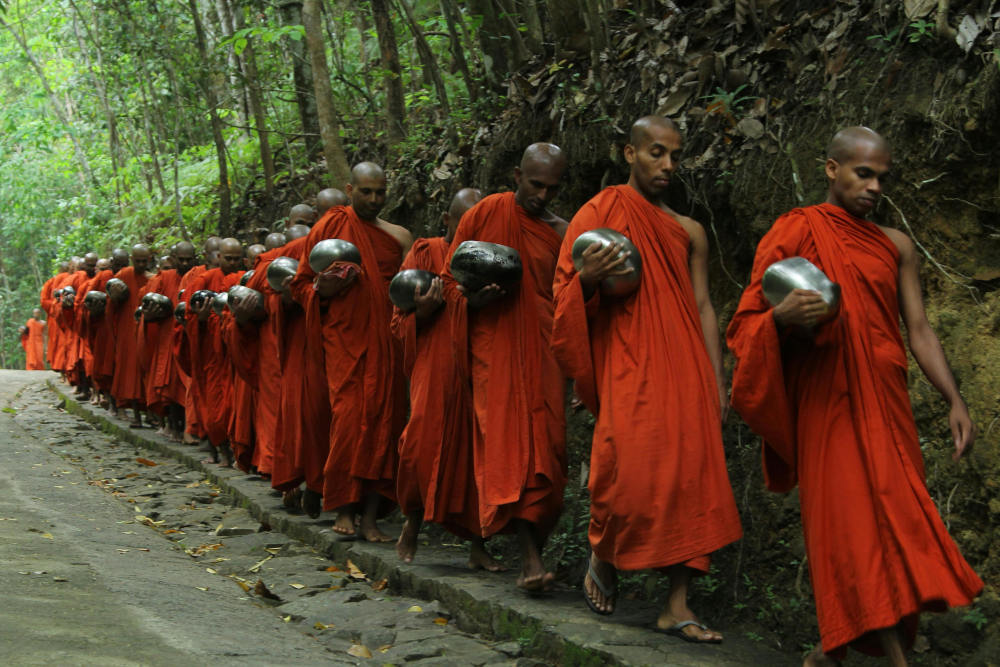
Vajrayana Buddhism, also known as the "Diamond Vehicle" or "Thunderbolt Vehicle," is a unique and powerful form of Buddhist practice that emphasizes esoteric teachings, ritual, and direct experience of enlightenment. It is considered the fastest path to awakening, but it requires dedication, discipline, and guidance from a qualified teacher. For beginners, entering the world of Vajrayana can be both exciting and challenging. This guide provides an introduction to Vajrayana Buddhism, outlining how to begin studying and practicing this profound tradition.
Understanding Vajrayana Buddhism
Vajrayana is a branch of Mahayana Buddhism and is primarily practiced in Tibet, Nepal, Bhutan, and Mongolia. It incorporates elements of Tantra, symbolism, and deity visualization, making it distinct from other Buddhist traditions. Some key aspects include:
-
The Bodhisattva Ideal – Like Mahayana, Vajrayana emphasizes the goal of attaining enlightenment to benefit all beings.
-
Esoteric Practices – Vajrayana teachings are often secret and passed down only through initiation by a qualified teacher (guru or lama).
-
Use of Ritual and Symbolism – Practices involve mantras, mudras (hand gestures), mandalas, and deity yoga.
-
The Role of the Guru – Spiritual teachers play a crucial role, providing guidance and transmission of sacred knowledge.
Step 1: Developing a Strong Foundation in Buddhism
Before diving into Vajrayana, it is essential to understand the basics of Buddhism. Beginners should study:
-
The Four Noble Truths – The foundation of all Buddhist teachings.
-
The Eightfold Path – A guide for ethical living and mental development.
-
Emptiness (Shunyata) – The philosophical core of Mahayana and Vajrayana.
-
The Bodhisattva Path – Cultivating wisdom and compassion for the benefit of all beings.
Recommended books for beginners:
-
The Heart of the Buddha’s Teaching by Thich Nhat Hanh
-
Introduction to the Middle Way by Chandrakirti (commentary by the Dalai Lama)
-
The Tibetan Book of Living and Dying by Sogyal Rinpoche
Step 2: Finding a Qualified Teacher
Vajrayana Buddhism places great importance on the guru-disciple relationship. A teacher (or lama) provides essential guidance, ensuring that practices are correctly understood and performed. To find a qualified teacher:
-
Look for teachers from established Tibetan Buddhist traditions (Nyingma, Kagyu, Sakya, Gelug).
-
Attend teachings or retreats led by recognized masters.
-
Study the teacher’s lineage and reputation to ensure authenticity.
-
Develop trust and confidence before taking formal commitments.
Step 3: Starting Vajrayana Practices
Once a foundation is established, beginners can start Vajrayana practices under the guidance of a teacher. Some key beginner practices include:
1. Refuge and Bodhisattva Vow
-
Taking refuge in the Three Jewels (Buddha, Dharma, Sangha) marks the formal entry into Buddhism.
-
The Bodhisattva Vow commits practitioners to working for the enlightenment of all beings.
2. Reciting Mantras
Mantras are sacred syllables that invoke spiritual blessings. Common beginner mantras include:
-
Om Mani Padme Hum (Compassion – Avalokiteshvara)
-
Om Tare Tuttare Ture Soha (Protection – Green Tara)
-
Om Ah Hung Vajra Guru Padma Siddhi Hung (Guru Rinpoche – Padmasambhava)
3. Visualization and Deity Yoga
Vajrayana practices involve meditating on enlightened beings (Buddhas and bodhisattvas) to cultivate their qualities. Beginners can start with:
-
Green Tara – For protection and compassion.
-
Chenrezig (Avalokiteshvara) – For cultivating loving-kindness.
-
Guru Rinpoche (Padmasambhava) – For spiritual guidance.
4. Prostrations and Mandalas
Physical gestures of devotion, such as prostrations and offering mandalas, help accumulate merit and purify karma.
5. Preliminary Practices (Ngöndro)
Serious Vajrayana practitioners eventually undertake Ngöndro, a set of foundational practices that include:
-
100,000 Refuge Prayers
-
100,000 Prostrations
-
100,000 Vajrasattva Mantras for purification
-
100,000 Mandala Offerings
Step 4: Ethics and Mindfulness in Vajrayana
Vajrayana Buddhism requires adherence to ethical principles:
-
Commitment to the Five Precepts – Avoid harming others, stealing, lying, intoxicants, and sexual misconduct.
-
Practicing Mindfulness – Cultivating awareness in daily life.
-
Maintaining Pure Perception – Seeing all beings as inherently enlightened.
Step 5: Engaging with a Sangha (Community)
Practicing Vajrayana alone can be difficult. Joining a supportive Buddhist community helps:
-
Attend meditation sessions at a local Dharma center.
-
Participate in online teachings from authentic Tibetan teachers.
-
Engage in retreats for deeper practice.
Challenges Beginners May Face
-
Complexity of Teachings – Vajrayana involves deep philosophical concepts and symbolic practices.
-
Need for a Teacher – Self-study is limited; proper transmission requires a qualified lama.
-
Commitment and Discipline – Advanced practices require years of dedication.
-
Cultural Adaptation – Western practitioners may struggle with Tibetan rituals and traditions.
Conclusion
Vajrayana Buddhism offers a powerful and transformative path to enlightenment, but it requires careful study, guidance, and sincere dedication. Beginners should first build a solid foundation in Buddhist philosophy, seek a qualified teacher, and gradually engage in core practices. By following this structured approach, new practitioners can embark on the Vajrayana path with clarity and confidence.
Was this article helpful to you? Please tell us what you liked or didn't like in the comments below.
About the Author: Alex Assoune
What We're Up Against
Multinational corporations overproducing cheap products in the poorest countries.
Huge factories with sweatshop-like conditions underpaying workers.
Media conglomerates promoting unethical, unsustainable products.
Bad actors encouraging overconsumption through oblivious behavior.
- - - -
Thankfully, we've got our supporters, including you.
Panaprium is funded by readers like you who want to join us in our mission to make the world entirely sustainable.
If you can, please support us on a monthly basis. It takes less than a minute to set up, and you will be making a big impact every single month. Thank you.































0 comments